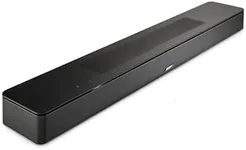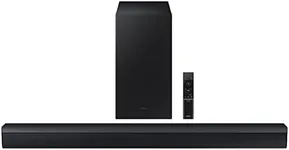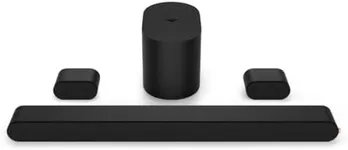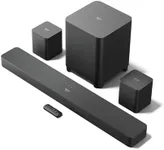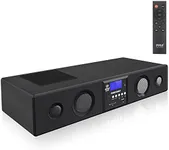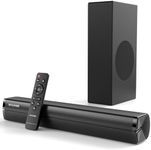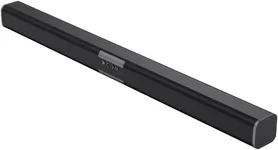Buying Guide for the Best Tv Sound Bars
Choosing the right sound bar for your TV can significantly enhance your viewing experience by providing better sound quality than the built-in speakers. When selecting a sound bar, it's important to consider various specifications to ensure it meets your needs and preferences. Here are some key specs to look at and how to navigate them.ChannelsChannels refer to the number of audio output sources in the sound bar. Common configurations include 2.0, 2.1, 3.1, 5.1, and even higher. A 2.0 channel sound bar has two speakers (left and right), while a 2.1 channel adds a subwoofer for better bass. Higher configurations like 5.1 include additional speakers for surround sound. If you want basic sound enhancement, a 2.0 or 2.1 channel might suffice. For a more immersive experience, especially for movies and gaming, consider a 5.1 or higher channel sound bar.
ConnectivityConnectivity options determine how you can connect the sound bar to your TV and other devices. Common options include HDMI ARC, optical, Bluetooth, and Wi-Fi. HDMI ARC provides high-quality audio and allows control through the TV remote. Optical connections are also high-quality but may lack some advanced features. Bluetooth and Wi-Fi enable wireless streaming from devices like smartphones and tablets. Choose a sound bar with connectivity options that match your devices and how you plan to use it. For example, if you want to stream music from your phone, Bluetooth or Wi-Fi is essential.
SizeThe size of the sound bar should complement your TV and fit well in your space. Sound bars come in various lengths, typically ranging from 20 inches to 60 inches or more. A longer sound bar can provide better stereo separation and a more immersive sound experience. Measure the space where you plan to place the sound bar and ensure it fits comfortably without obstructing the TV or other components. If you have a large TV, a longer sound bar might be more appropriate to match the width.
SubwooferA subwoofer enhances the bass and overall sound quality of the sound bar. Some sound bars come with built-in subwoofers, while others include separate wireless subwoofers. If you enjoy watching action movies, playing games, or listening to music with deep bass, a sound bar with a subwoofer is a good choice. Consider whether you have space for a separate subwoofer or if a built-in option is more convenient for your setup.
Sound ModesSound modes are preset audio settings that optimize the sound bar for different types of content, such as movies, music, sports, or dialogue. These modes adjust the sound profile to enhance the listening experience. For example, a movie mode might emphasize surround sound effects, while a dialogue mode ensures clear speech. Think about the primary use of your sound bar and choose one with sound modes that match your viewing habits. If you watch a variety of content, look for a sound bar with multiple sound modes.
Voice ControlVoice control allows you to operate the sound bar using voice commands through virtual assistants like Alexa or Google Assistant. This feature can be convenient for hands-free control, especially if you have other smart home devices. If you prefer using voice commands to control your devices, look for a sound bar with built-in voice control compatibility. Ensure it supports the virtual assistant you use most frequently.





